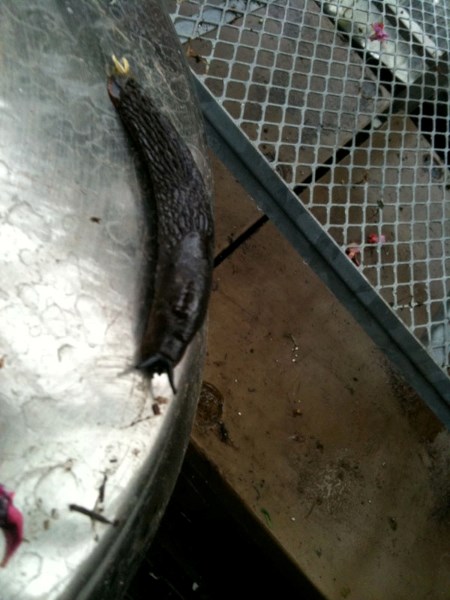There was nothing sluggish about the attempted disposal of a large critter at a local big-box garden centre Sunday, but the solution might have been inappropriate given the potential danger of an invasive species moving into local gardens.
Upon the discovery of a 10-centimetre-long slug, about the length and circumference of a thumb, a store clerk shook it onto a dustpan. She held the pan and the mollusc at arms length, and walked very quickly out to the parking lot, saying that while she certainly wasn’t stepping on it with her shoe, she hoped a car would soon run over it.
The clerk guessed the slug had hitched a ride with plants shipped to St. Albert from B.C.
The slimy creature might have remained hidden at the garden centre if the rain hadn’t brought it out to where it was found by a teenaged shopper, who saw it in a tiny pool of water on top of a plastic garbage bin lid.
Peter Heule, life sciences outreach technician at the Royal Alberta Museum, identified the species as either a European black slug, Arion ater or perhaps a black slug/Spanish slug hybrid.
“It is known to move successfully into new environments. It is a potential invasive [species] and should not be tossed into the parking lot! Chances are slim that they will survive our winters, but if it’s in a parking lot, who knows? ” Heule said, adding that anyone seeing such a foreign-looking creature could phone him at the museum, and he would take it. Or they could kill it themselves.
Heule suggested the most humane way to kill it would be to put it in the freezer.
The slug is a hermaphrodite, meaning it can fertilize itself without a mate.
“They don’t have to wait for Mr. or Mrs. Right to come along,” said Heule.
The Canadian Food Inspection Agency monitors the importation of plant material from outside of Canada, but the inspection of interprovincial shipments is less stringent.



